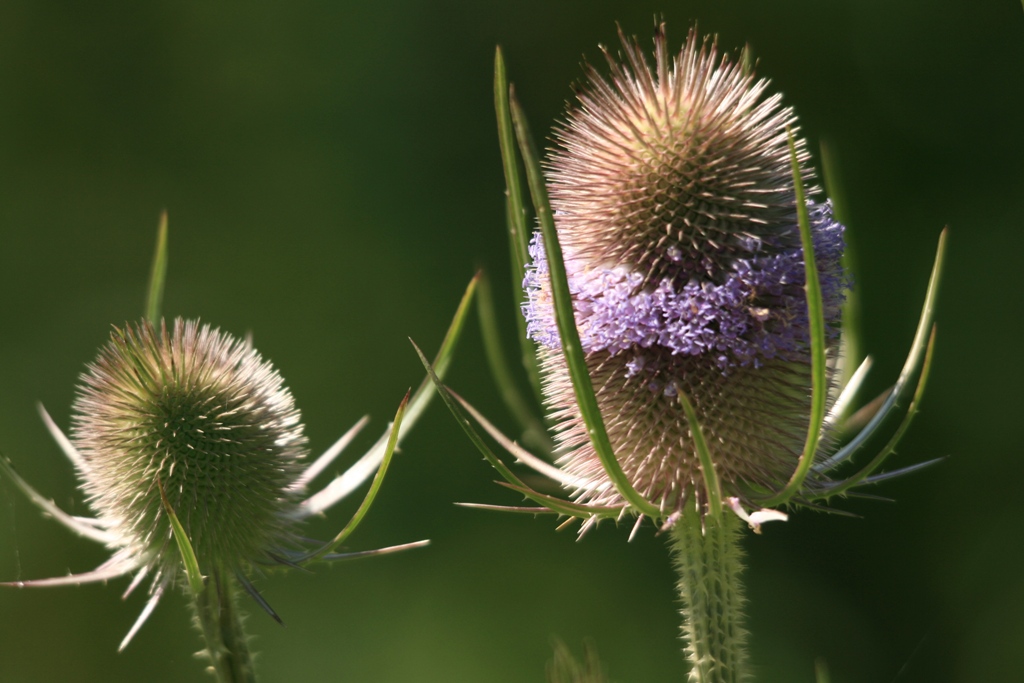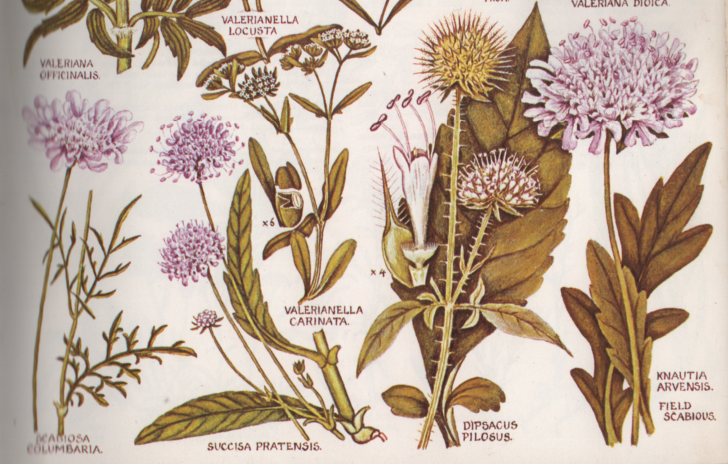

The Teasel family or Dipsacaceae came to my attention again now we are nearing Christmas time and I am hunting around for attractive seedheads to utilize in the yearly Christmas wreaths we are making.
There are many proud stems left in our Bee Garden at my allotment but I had to remove several which were dropping accross the pathways, which won’t go to waste!
I learned from Stace that this family has now moved to be family 140, situated in between the Valerianaceae before and the Griseliniaceae & Pittosporaceae after. These last two are both non-native families, originating from New Zealand. The next family is the Araliaceae or Ivy family, which is very familiar and a post about ivy and its uses can be found here.
More info can be found through links provided from online websites and pictures are by partner Matt Summers (M.S.), Mike Poulton of Ecorecord (M.P.) as well as from Wikipedia Common.
Above also this time half a page of Plate 43 in the Concise British Flora in Colour. This book was aquired by myself for the Kew Diploma Course in 1986 as one of the reference books to get. Still a beautifully illustrated book with 1486 species illustrated in 100 plates of all the flowering plant families of the B. I. The work was completed by W. Keble Martin in 60 years and first published in 1965.
The Teasel family only has 5 genera with few species on the B.I.. Most of the plants below are also found in the Birmingham and Black Country:
Contents
Dipsacus spp. or Teasels
- D. fullonum or Wild Teasel
- D. sativus or Fuller’s Teasel
- D. laciniatus or Cut-leaved Teasel
- D. pilosus or Small Teasel
- D. strigosus or Yellow-flowered Teasel
